During the first two decades of the 20th century, yachting was a particularly popular sport among men of standing and means. Each yachtsman wanted a tender worthy of his yacht. It needed to row and tow well and travel with efficiency and stability while carrying considerable weight in a range of sea states. It also had to have pleasing lines and be built to the highest standards of craftmanship. For this clientele, cost was not a consideration.Charlie Lawton of Marblehead, Massachusetts, built some of the finest tenders meeting these requirements. John Gardner was a coworker and friend of Lawton’s, and when Lawton retired sometime in the 1940s at age 90 he gave Gardner the lines, table of offsets, and some patterns for the Lawton Tender. Gardner eventually put this information together as a detailed set of plans and instructions for building the boat and published them in the January 1978 issue of National Fisherman. They were also included in Building Classic Small Craft: Complete Plans and Instructions for 47 Boats, published in 2004.Lawton built his tenders with carvel planking over delicate bent-oak frames. Newfound Woodworks worked from Gardner’s offsets, lines, and descriptions of Lawton’s building techniques to produce plans for a Lawton Tender built with cedar strips and covered with fiberglass cloth and epoxy resin. There is a sense in which these modern materials respect the original aesthetics of Lawton Tenders. Newfound Woodworks says that a Lawton Tender built with their kit materials weighs about 70 lbs, which is indeed light. The strip-built boat does not require frames, knees, or breasthooks, although they can be added if you want your tender to look more like Lawton’s.
Join The Conversation
We welcome your comments about this article. If you’d like to include a photo or a video with your comment, please email the file or link.

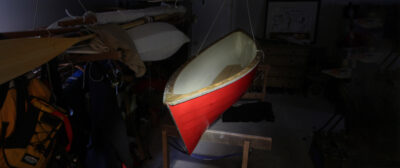
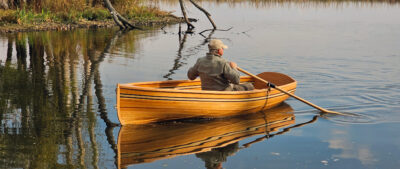
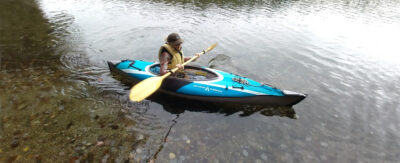
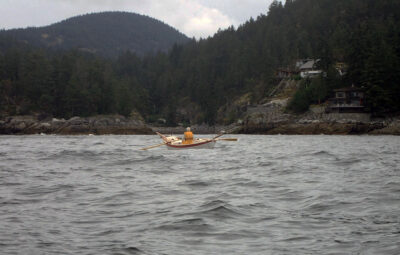
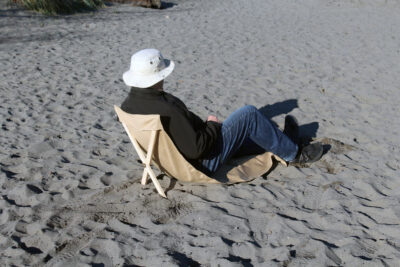
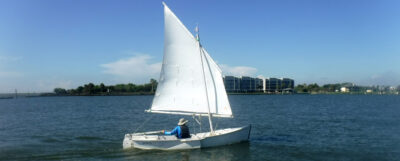
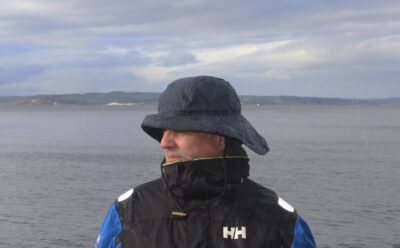
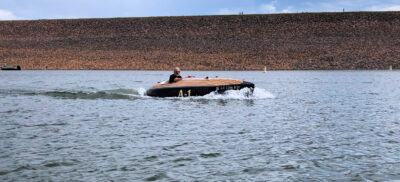
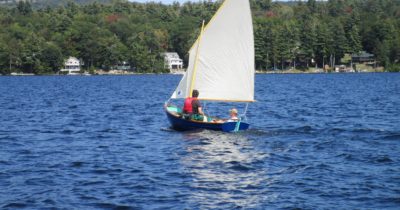
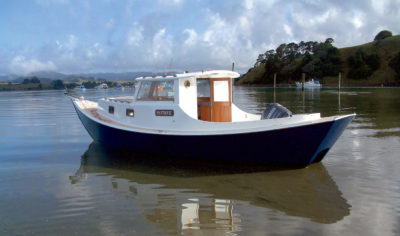
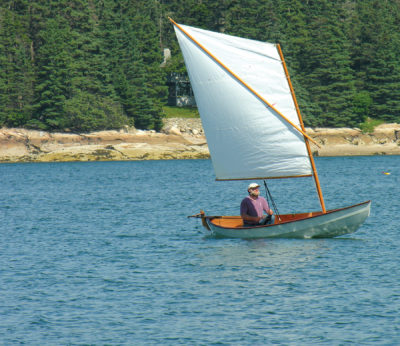

Steve,
Your tender looks great. I like seeing it afloat and I think is more striking looking in the water than when I saw it in your shop.
Jerry DePersia
Can the plan be stretched to make it longer and if so, has anyone built a longer version.?
How would the longer one perform as compared to the standard 10 version?
Regards
Jdr
10% is the rule of thumb, that’d put you at 11′. It’d be a hair faster and carry a hair more weight. But unless you carried that weight it’d ride higher too which seems to be the main drawback of this design.
Looks aren’t the drawback, dam that thing is gorgeous.
Iain Oughtred’s Acorns look similar and come slightly larger I believe, certainly his Guillemot is 11′ 5″ and can be done strip planked. Reviews for all of these are in back issues of this magazine.
If you want it bigger yet, look at Whitehalls. Basically this boat is a short Whitehall.
I made this boat. I am very pleased. Beautiful and light. I can send photos to anyone interested.